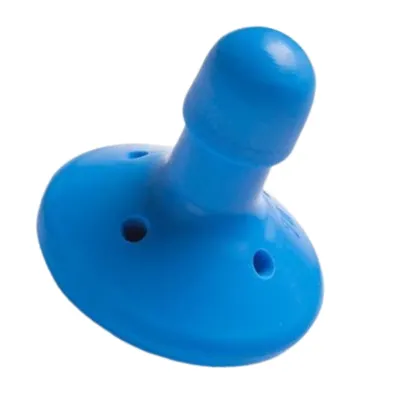How to properly insert a fungiform pessary?
A fungiform pessary (Gelhorn type) is a specific type of pessary used mainly in cases of significant lowering or prolapse of pelvic organs. Pessary insertion and removal may require some dexterity and body awareness, which means that in some cases patients may have difficulty inserting and removing the pessary on their own.
In practice, many patients are able to insert and remove the fungiform pessary themselves after appropriate training and practice. Instruction on how to do this is usually provided by a gynecologist or a qualified pessary specialist who can demonstrate the technique for placing, positioning and removing the pessary, as well as giving advice on hygiene and care.
Some women may need several attempts under the supervision of a specialist before they learn how to properly insert and remove the pessary. This may be difficult for some due to physical limitations such as decreased flexibility, problems with manual dexterity, or difficulty reaching the vagina. In such cases, the help of a professional or trusted person may be necessary.
It is important for patients to remember to have regular check-ups with their doctor, even if they are able to manage the pessary themselves, to monitor their health, the fit of the pessary, and to detect possible problems such as irritation, congestion or infections.
Before insertion, it is recommended to lubricate the pessary with estrogen cream, which improves blood supply to the tissues and faster regeneration of the vagina. The use of creams with estrogen should be consulted with a specialist.
How to remove the pessary?
The fungiform pessary can be removed and inserted by the patient herself. The patient should learn how to insert and remove the pessary in the doctor's office. Take the position recommended by the specialist, grab the pessary shaft and pull it down in a gentle circular motion. If you have difficulty pulling it out, push the pessary slightly forward. When the pessary is sucked in due to the vacuum created, insert your index finger onto the plate, i.e. the base of the pessary. It will be possible to admit air after grabbing the shaft to remove the pessary.
After removing the pessary, wash it under running water using liquid soap or a detergent for intimate hygiene. The pessary should be checked for any signs of mechanical damage. If you have difficulty removing the fungiform pessary, contact your doctor immediately.
Contraindications
- Mild prolapsus (grade 1 or 2) can be treated with ring or disc pessaries,
- For patients who require constant care or are unable to undergo regular replacement, support from medical staff or a family member is recommended.
- silicone allergy,
- Active infections and chronic inflammation of the vagina or pelvis exclude the use of a pessary until the infection subsides,
- Patients who do not comply should be closely monitored or not receive a pessary.
Contents of the package:
- Fungiform pessary Dr. Arabin size 50 mm - 1 pc,
- User manual.
NOTE: After unpacking the product, it is not possible to return it.





















